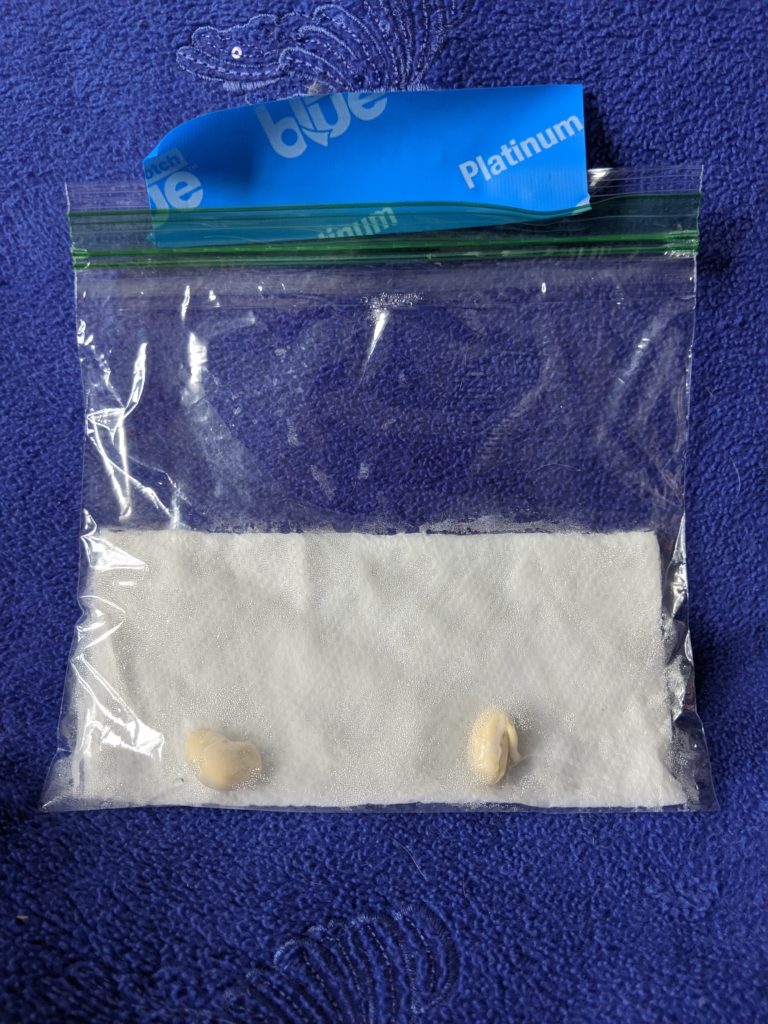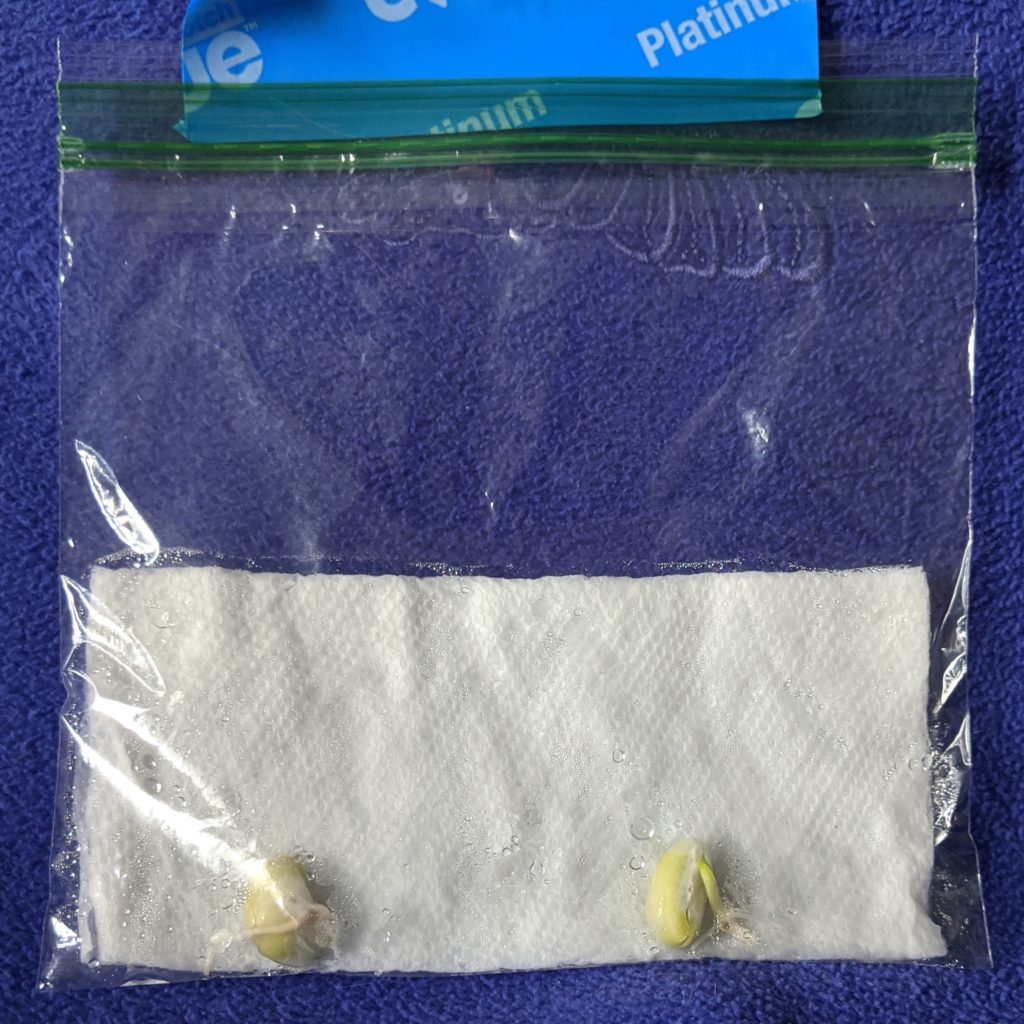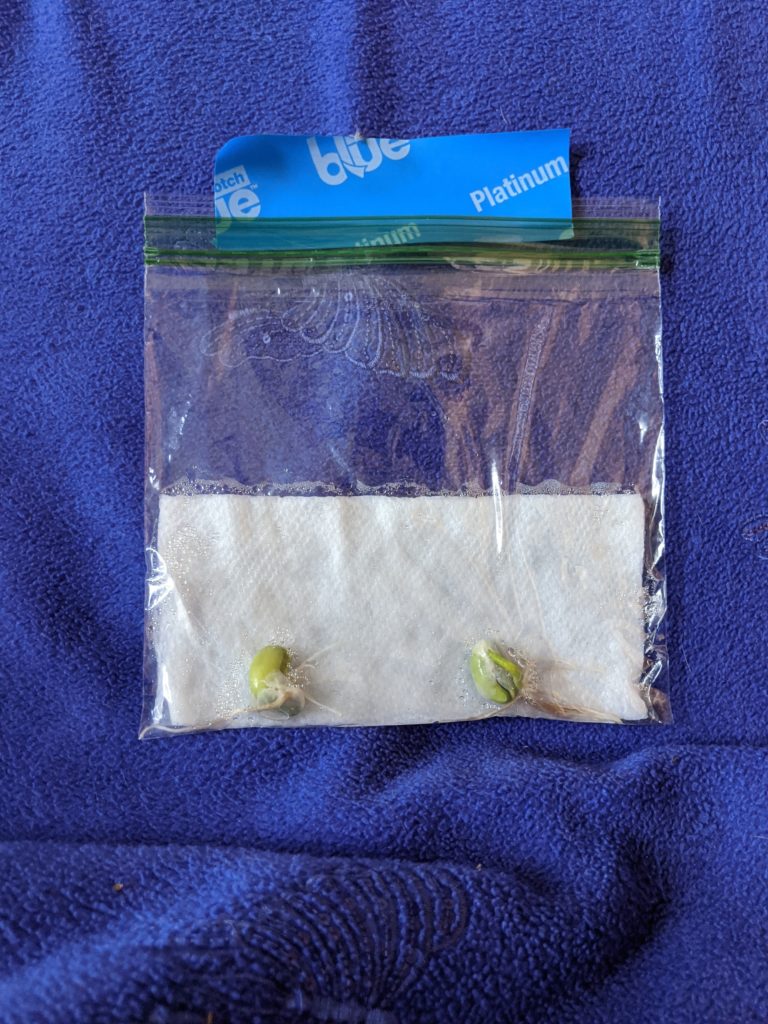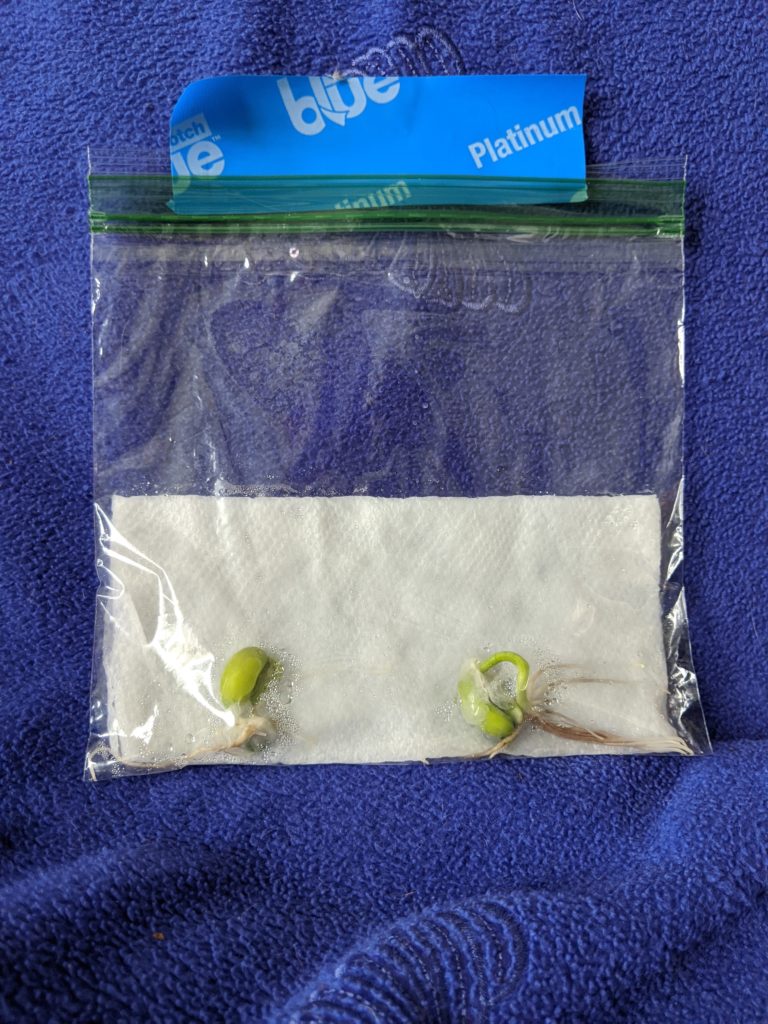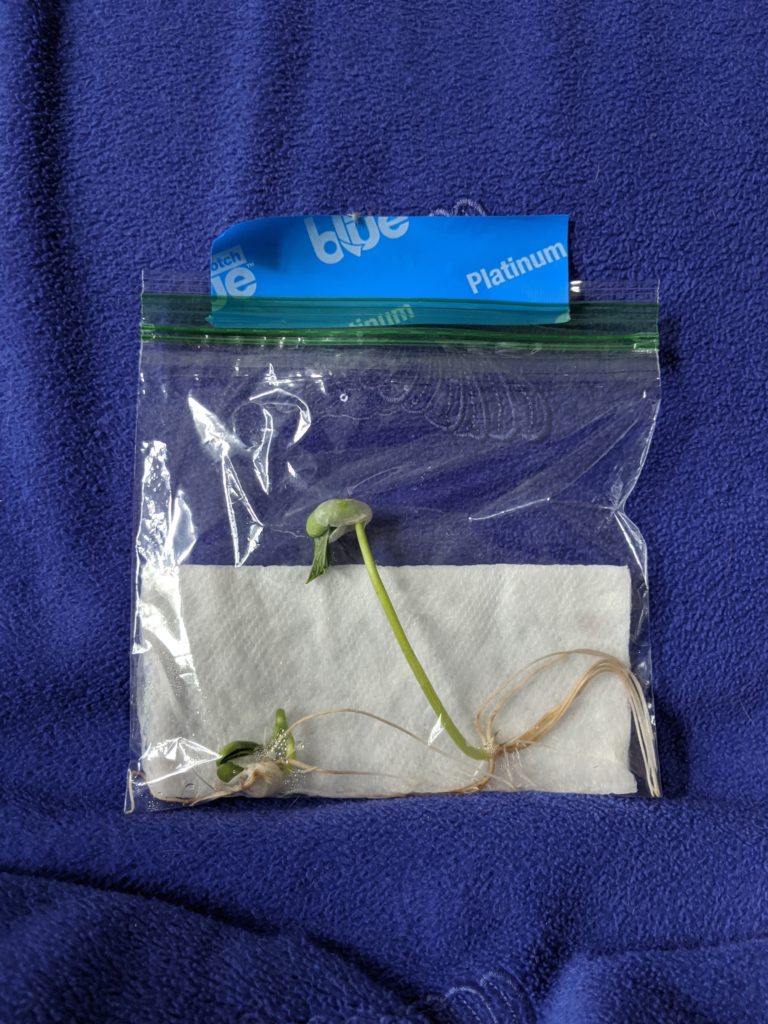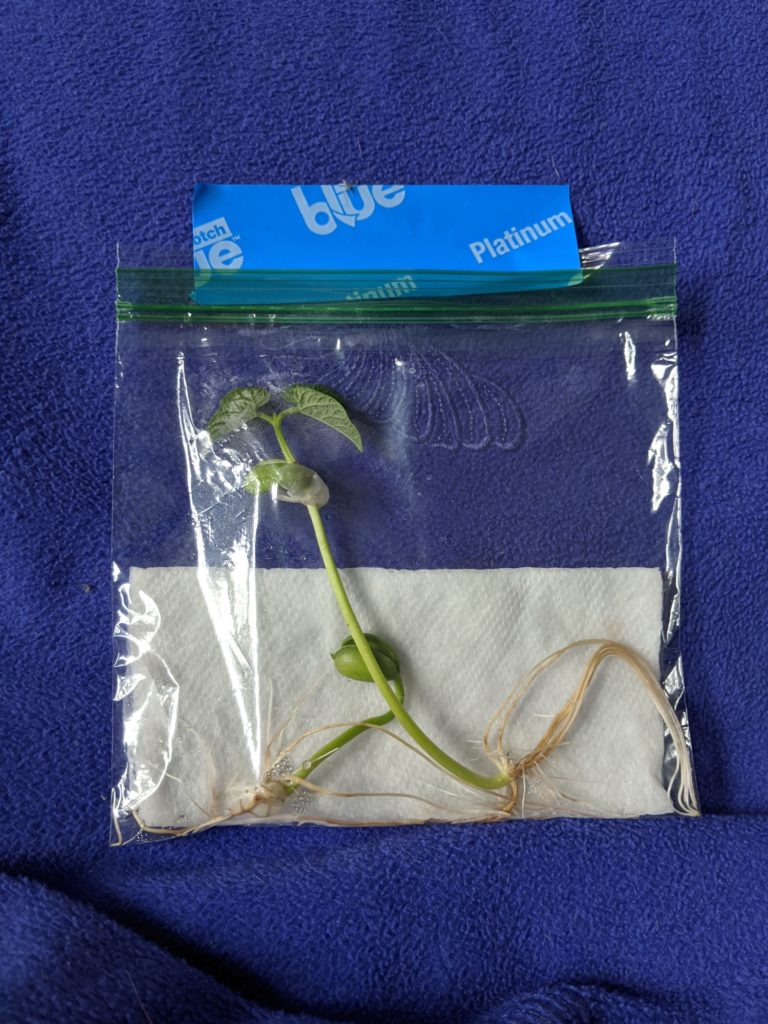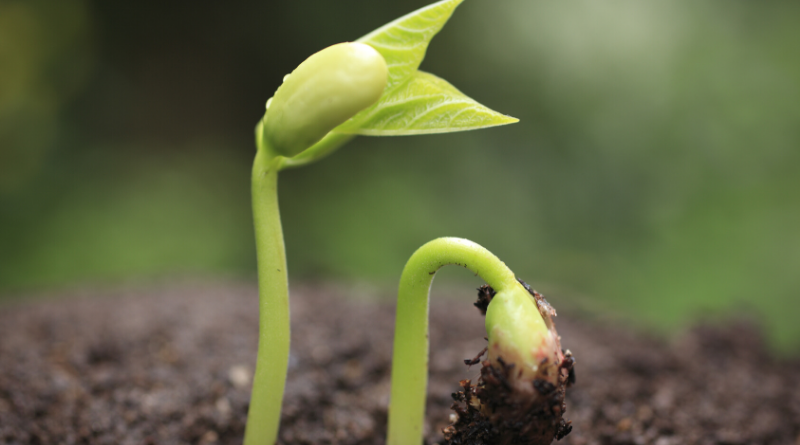
STEAM Connections: Watch It Grow
Every bean is a dormant, or sleeping, seed waiting to get the right signals to “wake up” and start growing into a new plant. See how we make it happen.
Germination is the name for this process which causes 1) a seed to sprout roots to take in nutrients from the soil and 2) leaves to take in sunlight to make food needed to grow.
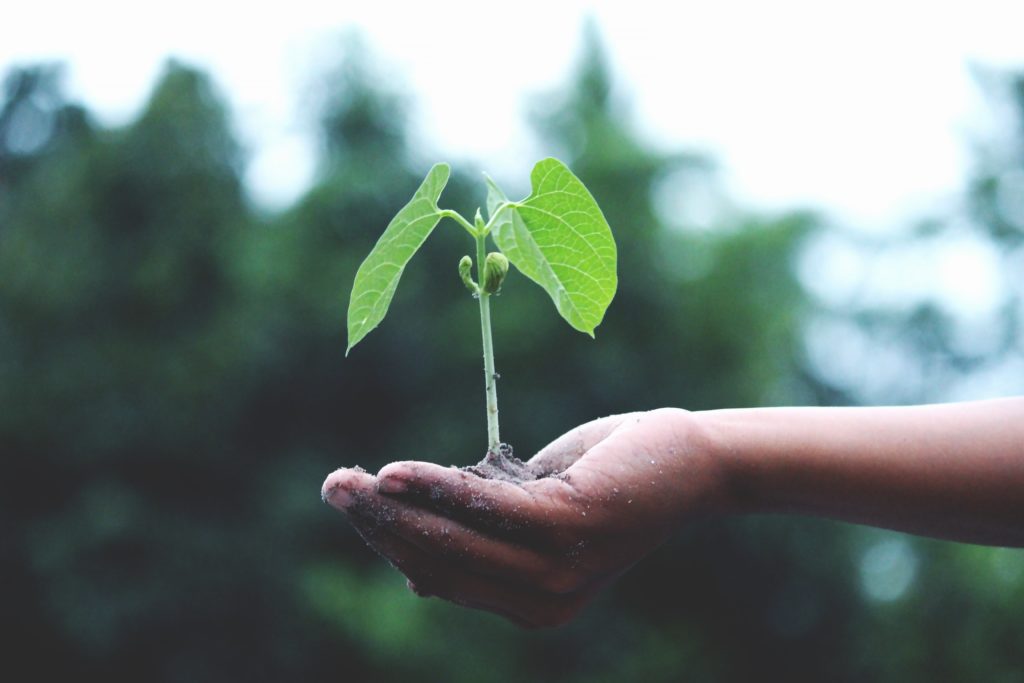
Plants are constantly growing but most early growth is underground where we can’t see it. Let’s make an easy terrarium, or container for growing plants, using household items to watch the germination and growth process in action!
STEAM Connections
In this bean growing activity, we’re covering botany (plant structures and growth cycle) and the scientific method, recording observations and drawing what you see, and taking measurements like height and growth calculation.
Supplies
Below is what you will need to conduct this STEAM Connections experiment:
- 2 sandwich-size plastic bags
- 4 dry beans or other large seeds
- Paper towels: 2 half sheets or 1 full sized sheet cut in half
- Tape
- Water
- Cup or small plastic container
Instructions
- Soak two of the beans in a cup for about 8 hours or overnight. Use enough water to cover the beans completely.
- Fold each paper towel in half (hamburger style) and then fold in half again.
- Soak paper towels in water, then squeeze to get out extra water so it is not dripping wet.
- Slide one paper towel into each plastic bag and spread out so it lays flat at the bottom of the bag.
- In one bag, put the two dry beans. Make sure they are both on the same side of the paper towel and spaced out about 2 inches apart. In the second bag, put the two soaked beans. If there is noticeable water at the bottom of the bag, you can stuff a little piece of paper towel under the beans to keep them from sitting in the water.
- Tape the bags to a window that gets good light for at least part of the day. Avoid windows that get direct sunlight all day – these will get too hot. Make sure the bean are facing indoors so you can clearly see the plants grow.
- Check on the beans daily to see the changes as they grow.
Review
Compare the soaked beans to the dry ones:
- How are they different?
- What happened to the soaked beans?
Make a prediction (hypothesis): which beans do you think will sprout first, dry or soaked? In nature, seeds such as beans get soaked by rain, digested by animals and blown about by the wind. These events help a seed to germinate faster by weakening the hard outer shell (seed coat) and expose it to needed elements to help growth. This is why the soaked beans grow much faster than the dry beans.
What is the first change you see in your beans? Within the first 24-48 hours (for the soaked beans), you’ll see a little root form near the center of the bean. Before the plant has leaves, it get food from the two halves of the bean (called cotyledons) and the newly developing roots. As the plant grows, watch how the bean halves shrivel up and the first two leaves start to develop and get bigger.
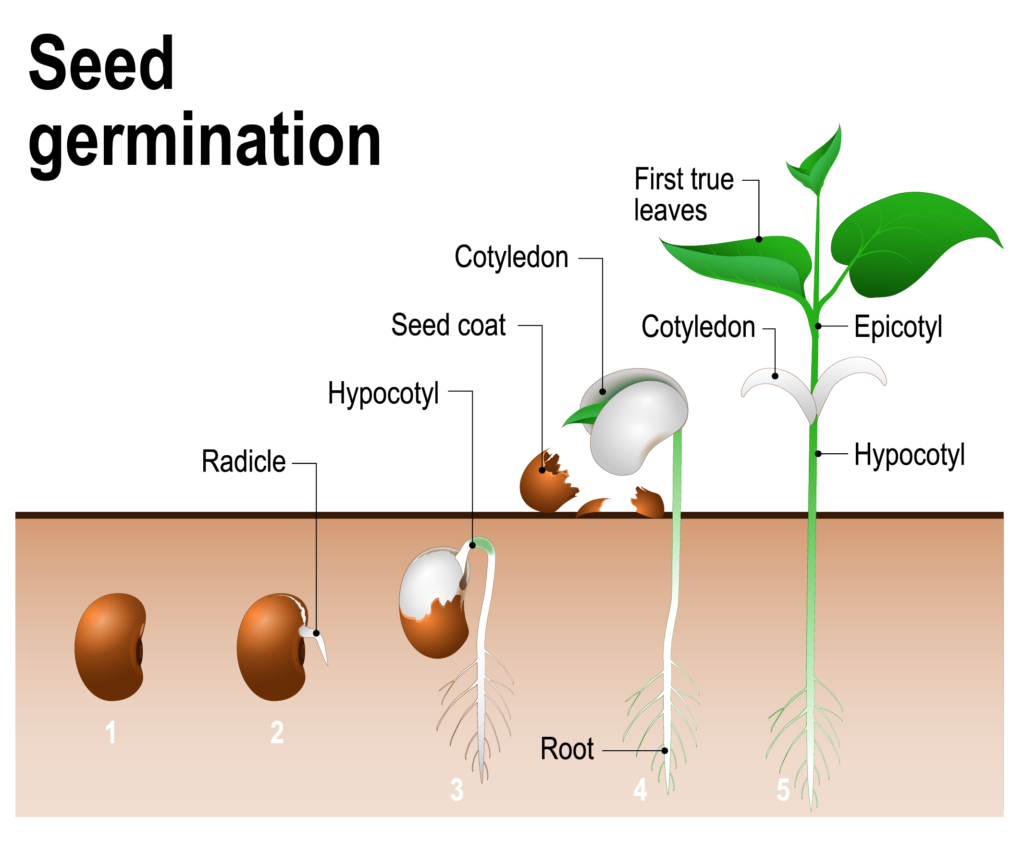
Practice taking measurements by recording the plants’ height to track their growth. Subtract the height of the previous day from the new measurement to record how much the plant has grown from day to day. Compare the measurements for the soaked beans to the dry beans.
For younger children, have them draw the sprouting seeds and ask them to describe the changes they see. Comparing and contrasting is a great way to work on observation skills and practice new vocabulary.
Continue Learning
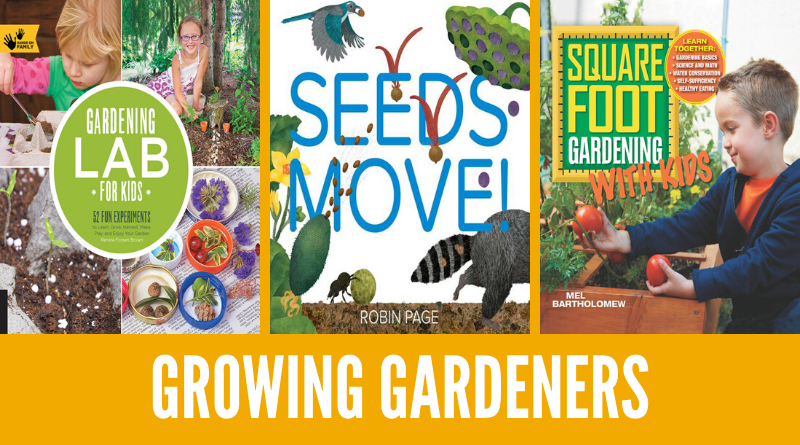
Gardening Lab for Kids: 52 Fun Experiments to Learn, Grow, Harvest, Make, Play, and Enjoy Your Garden
by Renata Fossen Brown
Square Foot Gardening with Kids: Learn Together: Gardening basics, science and math, water conservation, self-sufficiency, healthy eating
by Mel Bartholomew
A Seed Is Sleepy
by Dianna Hutts Aston
Seeds Move!
by Robin Page

